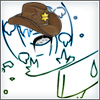Zeth
 The Admin
The Admin


|
 Sunday, November 28, 2010 Sunday, November 28, 2010
Yes. ZEQ2-lite uses simple Quake 3 map files with very little (if any) modifications. Any Quake 3 map file should work without fuss, although some of the extended entity functions may not be present due to ZEQ2-lite being originally based on the Quake 3 1.29 source base over the 1.32 (I think this only includes breakable entities).
The design process for maps in ZEQ2-lite does differ quite a bit than a general Quake 3 map though. Most Quake 3 mappers chose to use Radiant (GTK, QE, Net, etc.) exclusively to build their maps using nothing but brushwork. This gives the advantage of having CSG addition/subtraction options for complex shapes as well as a lot of collision and light optimizations, but does cut down on map portability to alternative engines and level of detail control.
Most ZEQ2-lite maps start in 3dsmax or another modeling program, are uv'd and textured there, and then finally exported as .ase and imported into Radiant. From there, only a simply skybox brush and player spawn point is required before doing a map compile. This will give you a quick and simple test, but framerates can be more than DOUBLED by building collision brushes in Radiant and then disabling the mesh triangle collisions. Generally speaking, ZEQ2-lite maps are usually in the 35,000-60,000 triangle range, but could easily go much higher.
When your map is prepared, the default compiling tool of choice is q3map or q3map2 (preferred and what Radiant uses). This application takes your brush, mesh, light, entity, and other data to construct your BSP file through the use of simple flag arguments.
Q3map2 supports static lightmaps with indirect bounce radiosity solutions, simulated ambient occlusion (dirtmaps as they call them), and other global illumination lighting methods. The Quake 3 BSP format also optimizes map visibility based on occluded objects to increase performance while indoors or obstructed by large objects.
More interestingly (and despite it's age), the Quake 3 BSP format can generate curved brush surfaces as well as dynamically tessellating these surfaces based on LOD levels from which Quake 3 itself can alter in realtime from multiple factors such as user system preference or distancing. That is to say that the user can have a 2000 triangle map become a much smoother 20,000 triangle map with better deformations and silhouette details at the flick of a variable.
Fog (volume), 3D skyboxes, water, lava, dirt, splatmapping, and other advanced brush types are also supported.
You can read more about Q3map2 features and flags here http://en.wikibooks.org/wiki/Q3Map2
It's over a decade old, so don't expect miracles; however, there are plenty of guides on the forums and users in IRC that would be more than willing to help you ease into the process.
|
